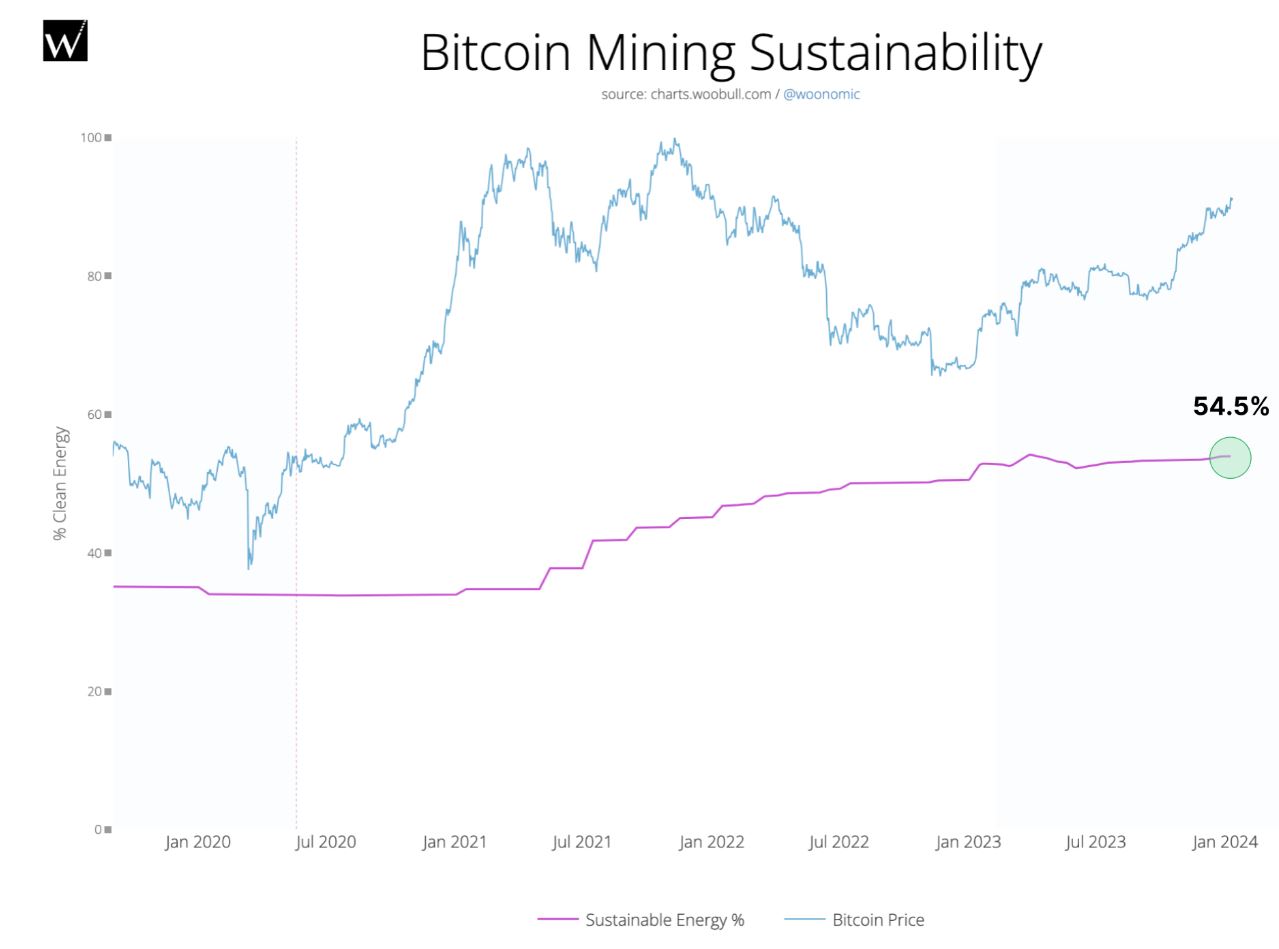Bitcoin ESG Forecast shared a blog post revealing significant industry data. Accordingly, activities in the Bitcoin mining sector using sustainable energy have risen to an all-time high of 54.5%, with a total increase of 3.6% in sustainable mining throughout the 2023 calendar year.
Sustainable Energy in Mining
According to an article on the blog site, Bitcoin ESG Forecast analyzed data obtained from the Bitcoin Energy and Emission Sustainability Tracker, or BEEST model, and compared Bitcoin’s sustainable energy process over the last four years with other sectors using publicly available data.
The data indicates that Bitcoin mining, with a 54.5% rate, is currently the highest user of sustainable energy across multiple sub-sectors and has achieved a 3.6% increase in sustainable mining for the 2023 calendar year when compared with other global industries.
Bitcoin ESG Forecast also shared its research on off-grid Bitcoin miners using methane emissions. According to the research, small oil producers in Canada and the USA are paying for natural gas flaring permits, and some companies are directly using methane, which is harder to detect.

Noteworthy Steps from Mining Companies
In light of these developments, some mining companies are not shying away from using vented methane gas to produce electricity for Bitcoin mining, which reduces the environmental impact compared to its release into the atmosphere. This means a reduction of 7.3% of the total emissions of the Bitcoin network without offsets, which is the highest level ever and the highest level of offset-free emission reduction in any sector.
According to the article, Tether’s foray into hydro mining in Latin America and the discovery of more off-grid methane-reducing mining activities mean that the Bitcoin network is using more sustainable energy than ever before.
Following the ban on crypto mining in China and the effective restriction of crypto mining activities in Kazakhstan, miners have predominantly moved to greener grids or sustainable off-grid areas in North America. The article states that global grids are becoming 0.7% greener annually, which has resulted in a 29% improvement in emission intensity for on-grid Bitcoin miners compared to 2021.

 Türkçe
Türkçe Español
Español









